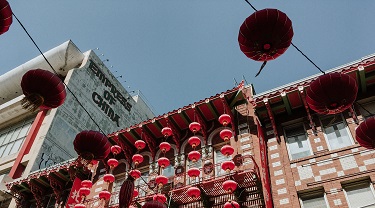In the first blog of the series, I outlined the importance of “product” and how to sketch your market viability. In this blog, l’ll examine how to protect your high-quality brand and resist the pitfall of negotiating on Price alone, when seeking buyers in China.
China is unquestionably a significant market opportunity. I want to help you get there without sacrificing on Price alone. And without falling into the discounting game.
I often talk to business people who are unsure how to position their offers to enter the Chinese market. It all comes back to the “5Ps Marketing Strategy” I developed and introduced in my book. Most of you have heard of the 4Ps of Marketing– Product, Price, Place, and Promotion. When it comes to China, the 5th P is Politics, an essential part of your sales and marketing strategy. I’ll talk about that in a later article as we go through this journey. Today, let’s talk about protecting your price and your quality, while still positioning your business as a competitive seller in China.
Canadians pride themselves on creating and selling premium quality products. Thanks to the rapidly-growing Chinese middle class, demand for these products is on the rise. Premium products, of course, come with premium pricing. But in highly-competitive markets, especially in emerging markets like China, price can be difficult to defend and maintain.
Price is often a key decision factor for customers in emerging markets. They’re seeking the best deal and they’re used to having low-priced goods at their fingertips. Lower quality goods have often been the trade-off for cost-conscious consumers. And good enough products at great prices usually satisfy emerging customer needs.
Your competitors in China know this. Price is often used as a strategic tool for assertive emerging competitors. A simple market penetration strategy to gain new customers: Give them an offer they can’t refuse by undercutting competitors on price.
But using this strategy in China may have a negative impact on your Canadian brand.
And they can afford it. Emerging competitors, like those from China, can do this because they have traditionally had exceptionally low production and labour costs. Supply chain efficiencies and low research and development (R&D) costs have also contributed to costs savings and, ultimately, their price point.
Economic development and growth in China triggered a shift in dynamics more recently. But the cost advantage still exists for your competitors there.
Evaluating your competition and your competitive position is an important part of this China strategy assessment process.
But do you sacrifice on price? And if so, how can you maintain the quality of your product? Canadian exporters to China need to ask themselves if they’re ready to adjust their positioning strategy to compete on dollars, or continue to sell their higher priced, higher quality goods into emerging markets.
3 Price considerations when competing for business in China
1. Don't fall into the discounting game
It’s a lose-lose battle with no bottom. Instead, know your threshold and defend your value-add.
Aggressive discounting is a losing battle, particularly when going up against an emerging entrant determined to sell into a new product area.
You need to know why your product is different from the others and why your price point is justified.
List out your differentiators and compare this to your competitors’.
Train your sales teams to position and defend your price for all its value-add, instead of reacting to requested price discounts. Value aspects may include company-wide support, many years of experience, reliability, company longevity and stability.
Put simply, you’ve been around for a while, you know the industry, and the customer can depend on you being around in the future. This is particularly important for products that have a long life cycle, or when your customer’s business infrastructure is dependent on it.
Also, be clear on your customers’ ability and propensity to pay. Can they afford it or can they find a way to afford it if they really want it? Or do they need help?
2. Get creative. Think holistically and think ‘solutions’
Is it really a price discount they want? Or do they need help paying for your product, (e.g. financing)? Consider new business models or partnership proposals that enable your customer to say ‘yes’ to your value-added, premium product and forgo the deep price discounting that they originally asked for.
3. Know your segment, know your customer and know what they want
‘Everyone’ in China is not your addressable market. Market segmentation and analysis is essential, especially when expanding into new and less known countries.
Canadian brands have a reputation for quality and are sought-after by some segments. Brands in general have an appeal with some of the new wealthy in China. Identify this segment of customers and target them. Additionally, conduct a detailed competitive analysis to know who you’re up against. They may not always be local, Chinese competitors either.
You may also consider creating a customized product to meet local needs to allow you to be more competitive on price. Your analysis may conclude, for example, that you cannot compete on price in China with your current product due to production and materials costs. In this case, you might consider a creating a modified version of your offer to meet the price point of your target segment. But be cautious.
Don’t sacrifice your brand reputation
You don’t want to compromise the brand appeal of your Canadian product, particularly if you determined your target segment customers desire your premium offering. When Apple introduced the iPhone5c – a less feature-rich phone at a lower price point for emerging markets, they were disappointed. The customers who wanted to acquire an iPhone desired it for its premium brand notoriety. They weren’t interested in a lesser version. They preferred to pay the higher price for the original iPhone product with the brand status. Although it represented a narrower slice of the overall market, this was Apple’s true target customer segment.
Sometimes accurately identifying your customer segment means a smaller market but it also means a sharper, optimized and more successful sales and marketing strategy, one in which you don’t have to sacrifice Price.
As you go through these price considerations in your China market assessment, go back to the work you did evaluating the 'Product P' (in our last article) and reconcile the two to ensure consistency. See you next time in our next article of the series."







